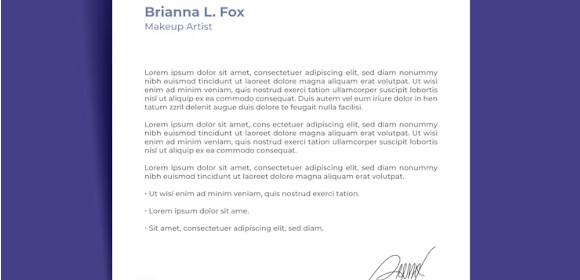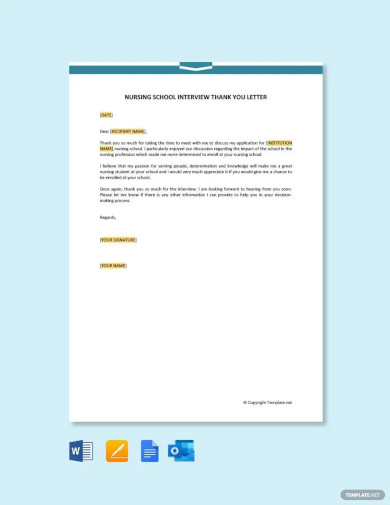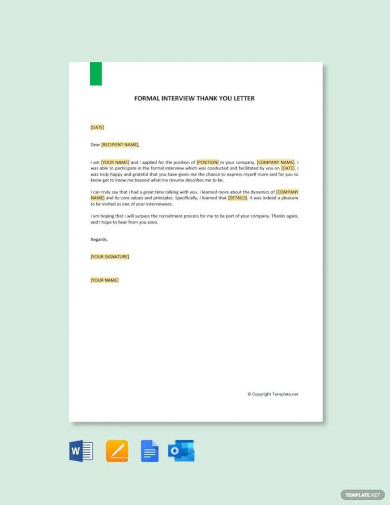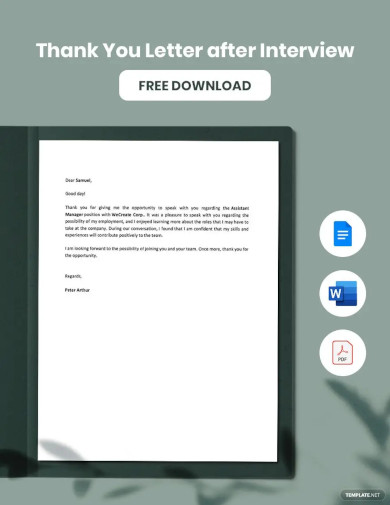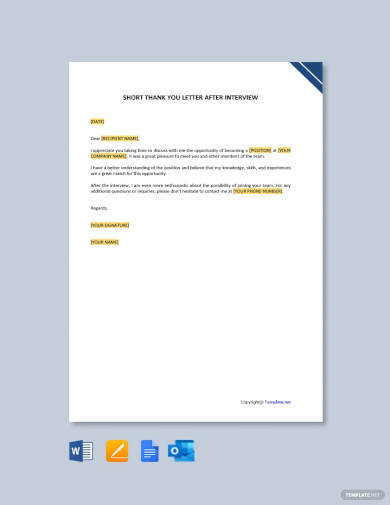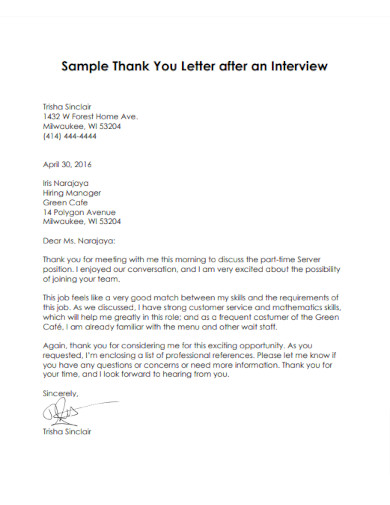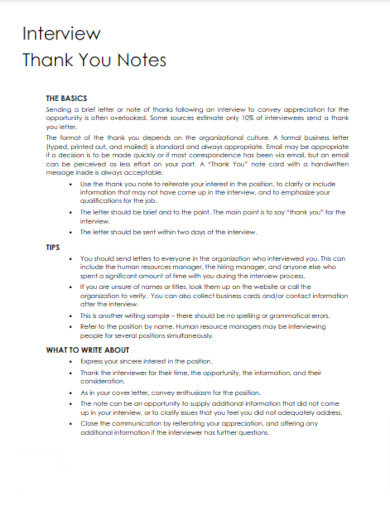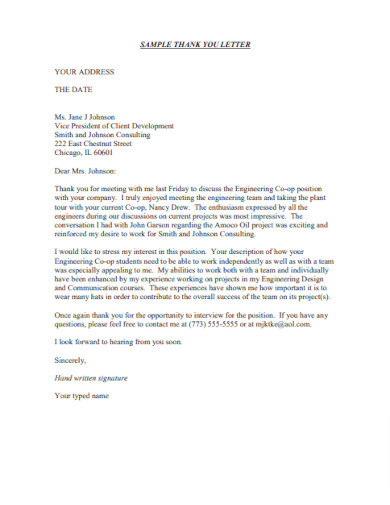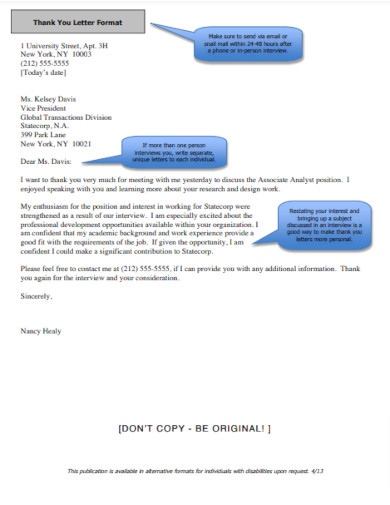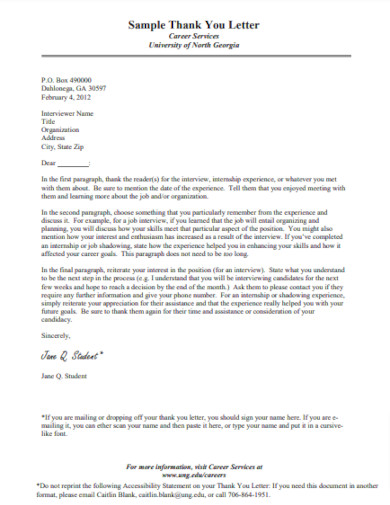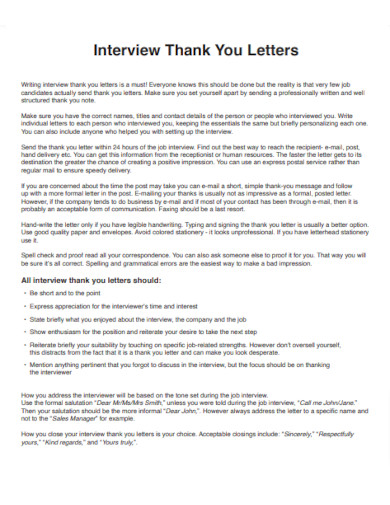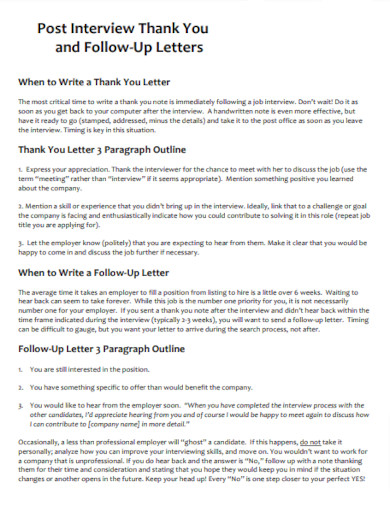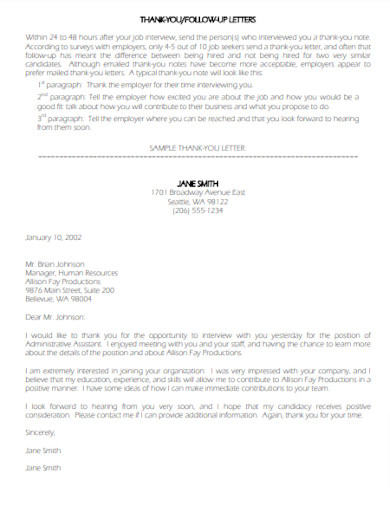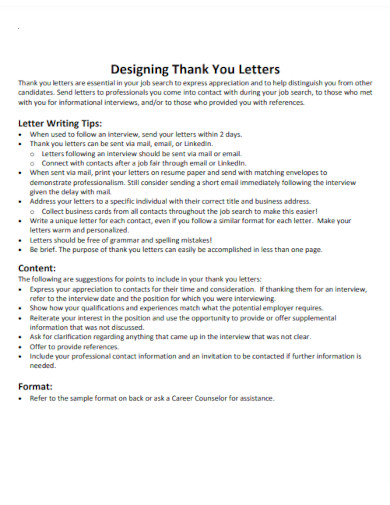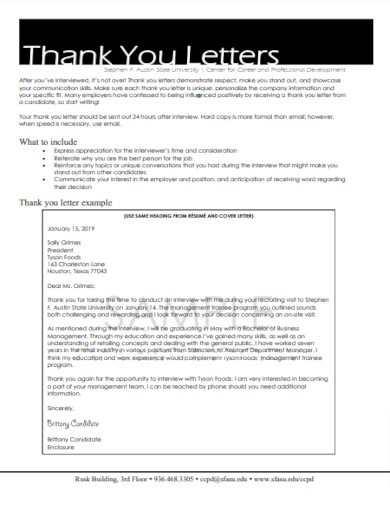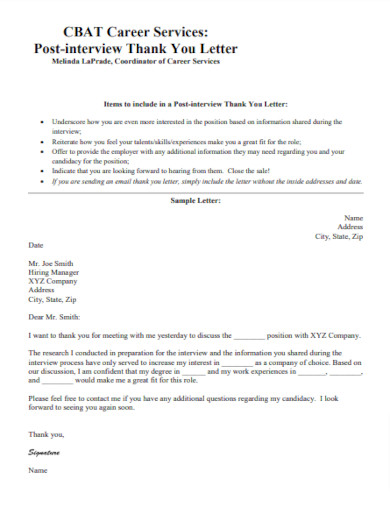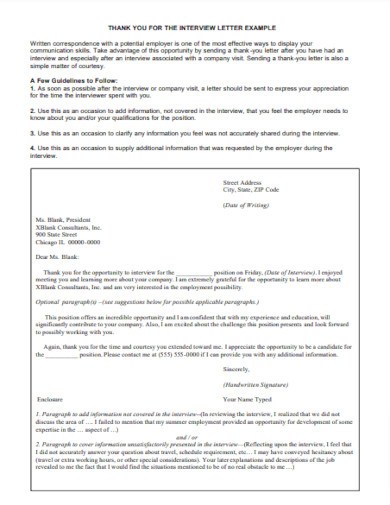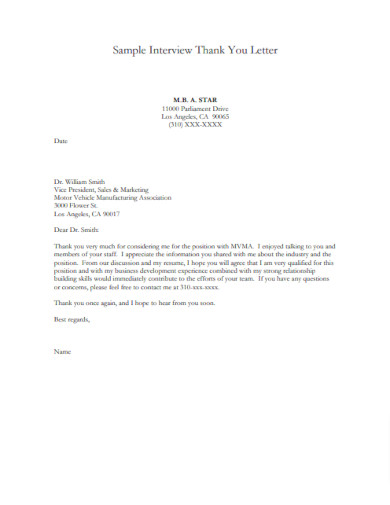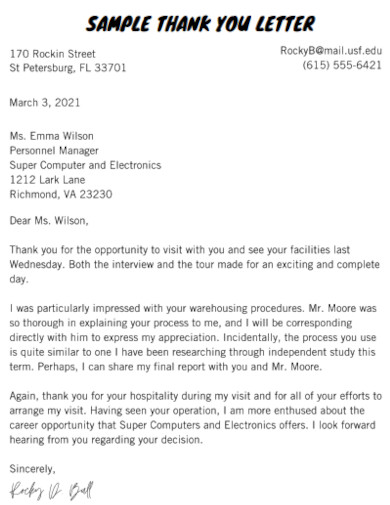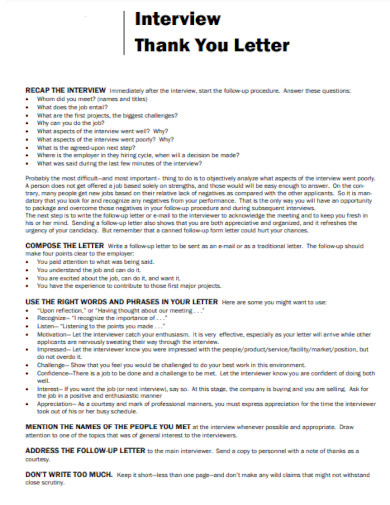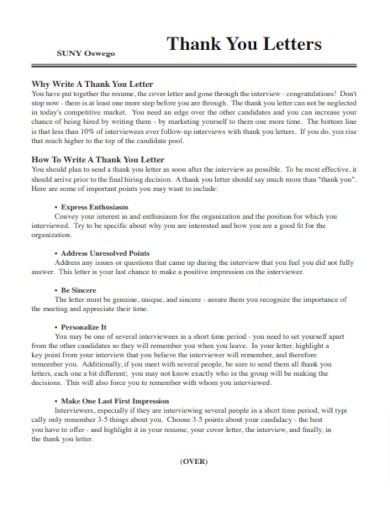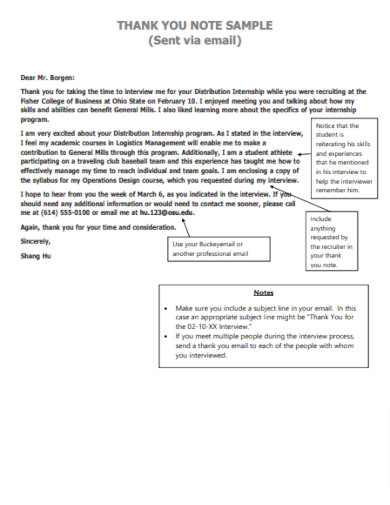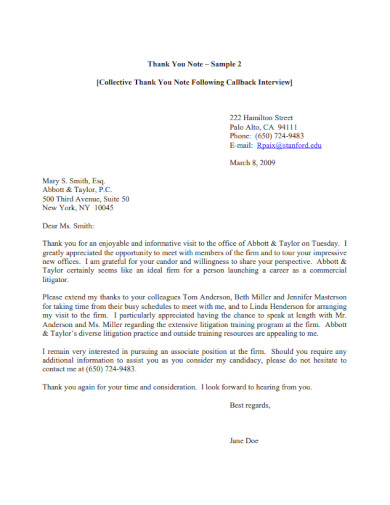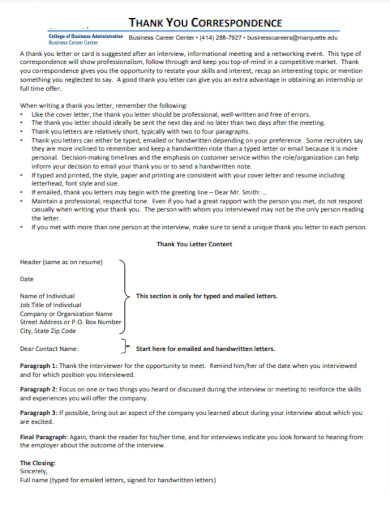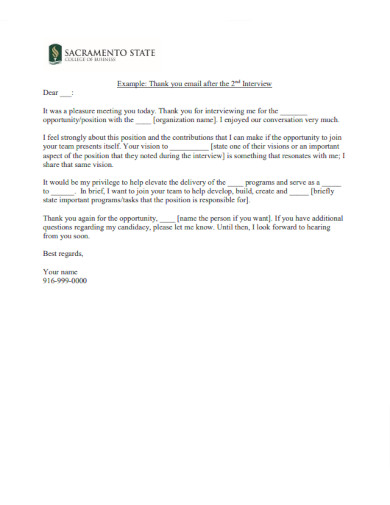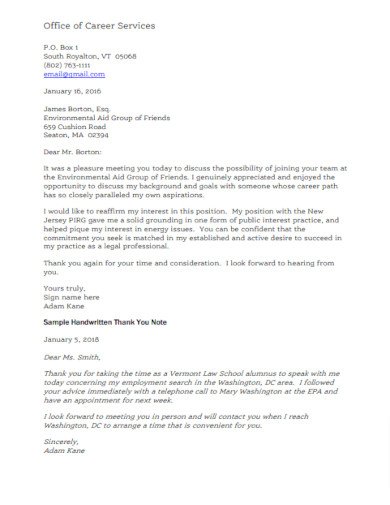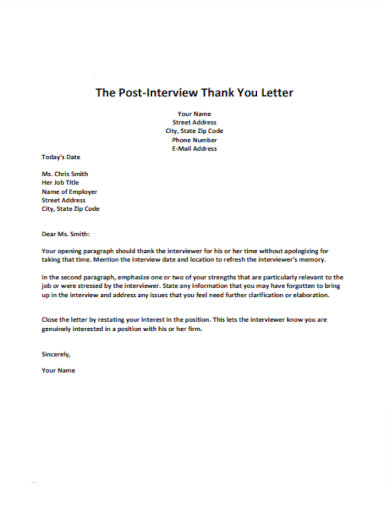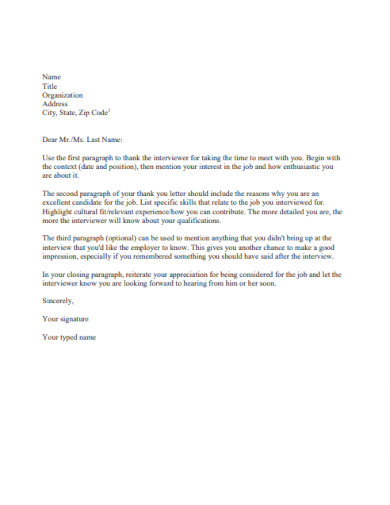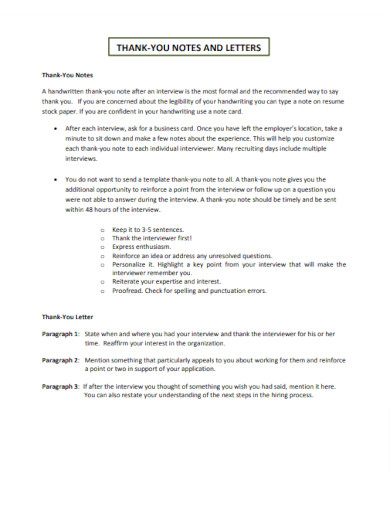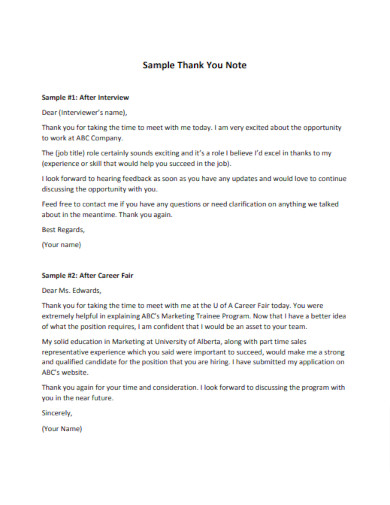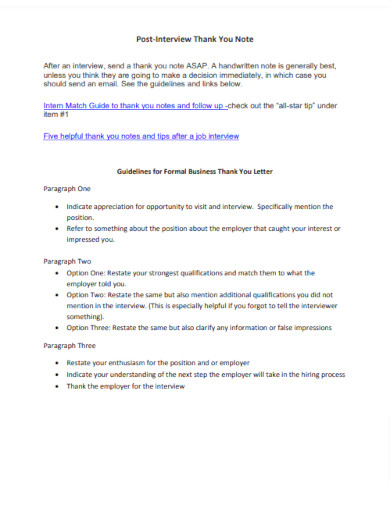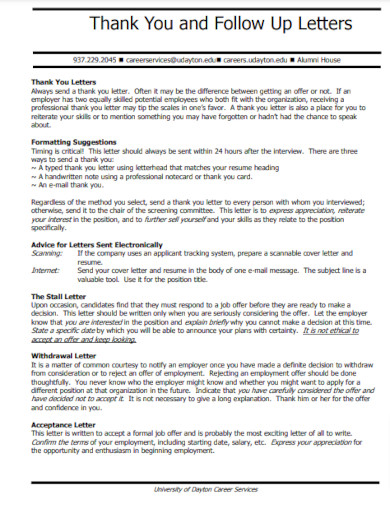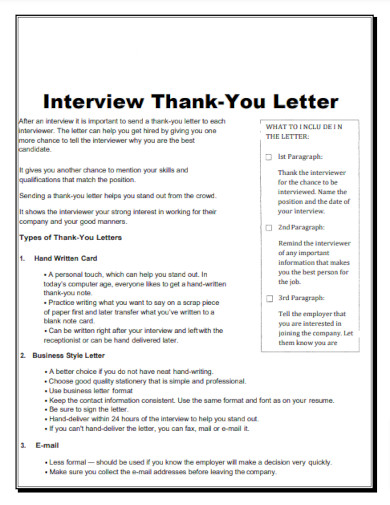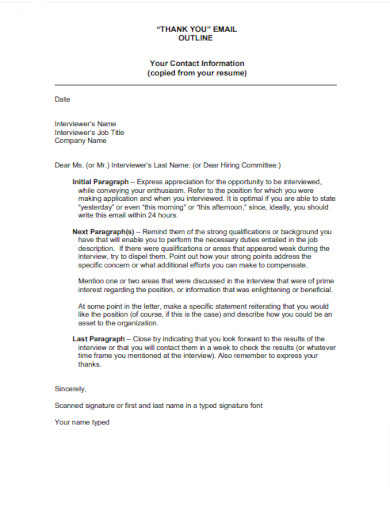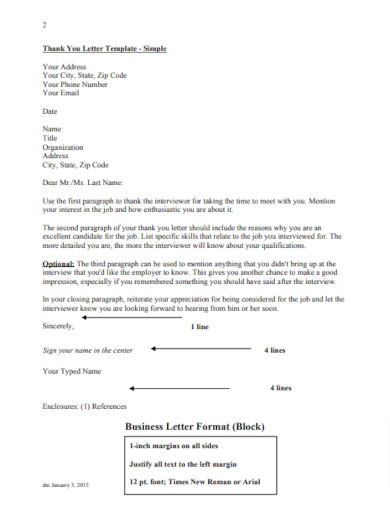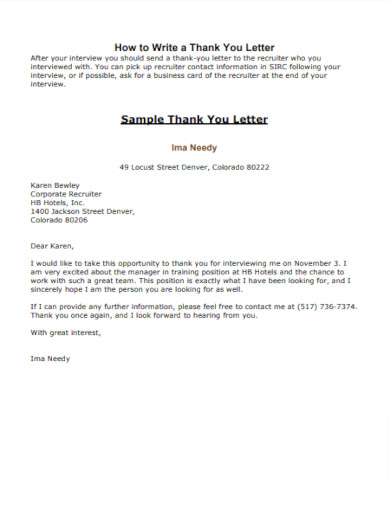37+ Interview Thank You Letter Examples to Download
The post-interview thank-you letter is an essential step in the job application process that often goes overlooked. This simple gesture can help you stand out from other applicants, demonstrate your gratitude for the opportunity, and reinforce your interest in the position. In this article, we’ll explore tips for job interviews with questionnaires and how to format a letter properly, including addressing the letter and letter envelope, as well as whether to send it via email or traditional mail. We’ll also provide examples of how to craft a thoughtful and effective thank-you letter following a recruitment interview report.
bb_toc content=”][/bb_toc]
1. Nursing School Interview Thank You Letter
2. Formal Interview Thank You Letter
3. Nursing Interview Thank You Letter
4. Thank You Letter after Interview
5. Short Thank You Letter After Interview
6. Sample Thank You Letter after an Interview
7. Interview Thank You Notes
8. Sample Thank You Letter
9. Thank You Letter Format
10. Simple Thank You Letter
11. Thank You For The Interview Letter Example
12. Interview Thank You Letters
13. Post Interview Thank You Letters
14. Thank You and Follow-Up Letters
15. Designing Thank You Letters
16. Thank you letter example
17. Basic Post Interview Thank You Letter
18. Editable Thank You For The Interview Letter Example
19. Printable Interview Thank You Letter
20. Standard Interview Thank You Letter
21. Modern Interview Thank You Letter
22. Thank you Letter and Follow-Up Templates
23. Creative Thank You Letters
24. Thank You Notes Sample
25. Thank You Note Following Callback Interview
26. Thank You Correspondence
27. Thank You Email After The 2nd Interview
28. Draft Thank You Letter
29. Post-Interview Thank You Letter
30. Thank You Letters Following an Interview
31. Thank Notes and Letters
32. Sample Thank You Note
33. Post-Interview Thank You Note
34. Thank You and Follow Up Letters
35. Interview Thank You Letter Example
36. Thank You Email Outline
37. Thank You Letter Packet
38. Popular Thank You Letter
What is an Interview Thank You Letter?
An interview thank you letter is a formal message sent by a job applicant to the interviewer(s) following a job interview. The purpose of the letter is to express gratitude for the interviewer’s time and to reiterate the applicant’s interest in the position. A well-crafted thank you letter can help to leave a positive impression on the interviewer(s), demonstrate professionalism, and reinforce the applicant’s qualifications and enthusiasm for the role. The letter may be sent via email or traditional mail, depending on the company’s preferences and the applicant’s personal style.
Before diving into the thank-you letter itself, it’s essential to nail the job interview. This means being prepared to answer common interview questions and asking thoughtful questions in return. One way to prepare is to review the job description and come up with examples of how your experience aligns with the position’s requirements. Read more Tips for Job Interview with sample Questionnaire here.
How to Write an Interview Thank You Letter
When writing your thank-you letter, it’s crucial to format it correctly. Begin by addressing the letter to the interviewer(s) who met with you. If you’re unsure of their names, you can reach out to the HR department or consult the job application letter for guidance. Next, consider the delivery method. If you’re sending a traditional letter, format the envelope with the correct letter address and postage. If you’re sending an email, use a professional subject line and sign off with your full name and contact information. Writing an interview thank you letter can seem daunting, but it’s a relatively straightforward process if you follow these steps:
Step 1: Start with a greeting
Begin your letter with a professional greeting, using the interviewer’s name if you know it.
Step 2: Express gratitude
Thank the interviewer for their time and the opportunity to interview for the position.
Step 3: Reiterate your interest
Restate your interest in the position and emphasize how the interview confirmed your enthusiasm for the role.
Step 4: Highlight key takeaways
Briefly summarize the key takeaways from the interview, including any notable points you discussed or questions you answered.
Step 5: Reinforce your qualifications
Use the letter as an opportunity to reinforce your qualifications and skills, emphasizing how they align with the requirements of the position.
Step 6: Close with a positive note
End your letter by thanking the interviewer again and expressing your enthusiasm for the opportunity to join the company.
Step 7: Edit and proofread
Before sending the letter, edit it for clarity and tone, and proofread it carefully for spelling and grammar errors.
FAQs
Is it necessary to send a thank-you letter after an interview?
Sending a thank-you letter after a job interview is not mandatory, but it is considered a professional and courteous gesture. It can help to leave a positive impression on the interviewer(s) and reinforce your interest in the position.
When should I send the thank-you letter?
It’s best to send the thank-you letter as soon as possible, ideally within 24-48 hours of the interview. This demonstrates your promptness and enthusiasm for the position.
Should I send a traditional letter or an email?
The delivery method depends on the company’s preferences and your personal style. If the company tends to be more traditional, a physical letter may be more appropriate. Otherwise, an email is generally acceptable, especially if the hiring process is moving quickly.
In conclusion, writing a thank-you letter after a job interview can set you apart from other candidates and reinforce your interest in the position. Remember to prepare thoroughly for the interview itself, format the letter correctly, and craft a thoughtful message that highlights your qualifications and enthusiasm for the role. Whether you choose to send a traditional letter or an email, make sure to deliver it promptly to keep the conversation going. Good luck with your job search.


